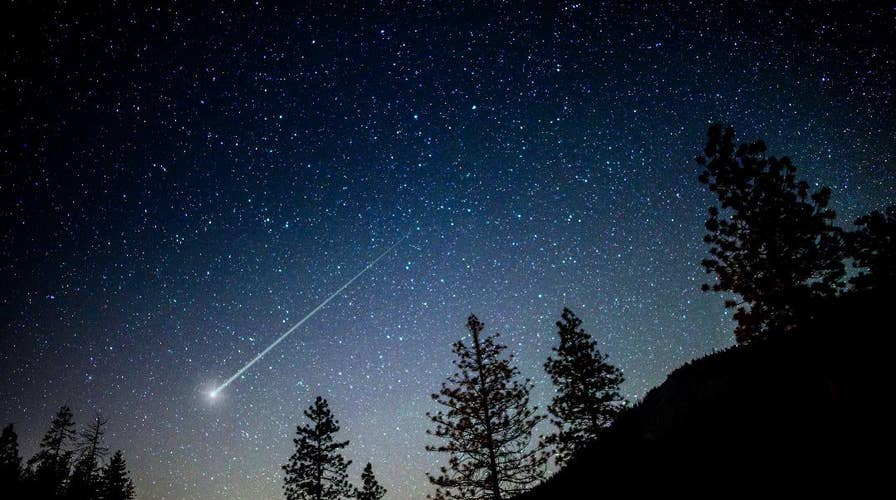Stargazers, get ready to bundle up as you catch one of the best meteor shows of the year — the Geminid meteor shower.
A sprinkle of stars will be visible in the night's sky this week as the winter meteor shower makes its annual appearance. The meteor shower, which contains debris from 3200 Phaethon, is expected to peak Thursday night into Friday morning, shooting anywhere between 60 to 120 meteors per hour. The space rocks will zoom by, hitting Earth at around 22 miles per second, according to the American Meteor Society (AMS).
"The Geminids are often bright and intensely colored," the AMS states on its website. "Due to their medium-slow velocity, persistent trains are not usually seen."
MYSTERIOUS 'CREATURE' SPOTTED IN JUPITER'S CLOUDS STUNS NASA, SPACE ENTHUSIASTS
Here's everything you need to know about the starry spectacle.
How are meteors formed?
A meteor forms when a meteoroid, a type of space rock that breaks off from an asteroid — a rocky body orbiting the sun — enters Earth's atmosphere. As soon as the space debris crosses over, it breaks down into what scientists call a "meteor," which then vaporizes and — as a result of friction — appears as a bright streak of light in the sky.
"Because of their appearance, these streaks of light some people call meteors 'shooting stars,'" NASA explains in a blog post. "But scientists know that meteors are not stars at all — they are just bits of rock!"
What is a Geminid meteor, specifically?
Geminid meteors are small chunks of rock that break off the famous 3200 Phaethon. These particular meteors are named after their point of origin — the constellation Gemini.
“The meteor shower is triggered by an interesting object. 3200 Phaethon is a comet/asteroid hybrid. It orbits the sun every 550+ days. This object puts out a fresh batch of debris every other year. This makes the Geminid meteor shower very consistent. Some argue it is actually increasing in intensity,” Accuweather astronomy expert Dave Samuhel explains.
When can I see the Geminid meteor shower?

A Geminid meteor streaks across the sky. (Jimmy Westlake/NASA)
Technically, meteors will be flying across all week. But your best bet at witnessing a fireball in action will be overnight on Dec. 13 and Dec. 14 — when the shower reaches its peak. You’ll be able to catch the most meteors around 2 a.m. on that night.
The shower will be visible in both the Northern and Southern atmospheres after midnight, though pollution, weather and the Moon could cloud the sky and prevent you from catching the show.
HOW SPACE CAN CHANGE THE HUMAN BODY
“From the Southern Hemisphere, observers should see fewer, but still plenty, of medium speed meteors once Gemini rises above the horizon after midnight local time,” NASA told Accuweather.
How can I watch it?
Unlike solar eclipses, which requires special equipment to view the astrological event, you don't need anything to spot this celestial event.
"Get to a dark spot, get comfortable, bring extra blankets to stay warm, and let your eyes adjust to the dark sky," NASA suggests. "A cozy lounge chair makes for a great seat, as does simply lying on your back on a blanket, eyes scanning the whole sky."
It takes about 20 minutes for your eyes to adjust to the darkness, so you should head outside about an hour before the meteors are expected to shoot across the sky.
“The meteors will appear in all parts of the sky,” Bruce McClure and Deborah Byrd previously explained to EarthSky. “It’s even possible to have your back to the constellation Gemini and see a Geminid meteor fly by. However, if you trace the path of a Geminid meteor backwards, it appears to originate from within the constellation Gemini.”

